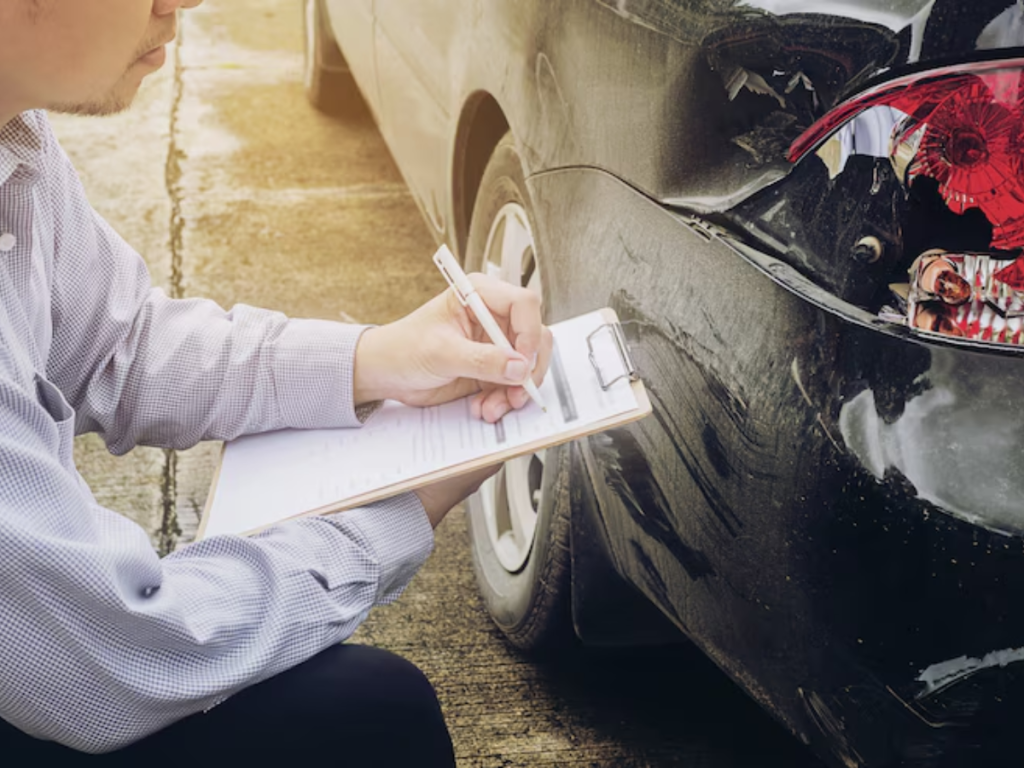Introduction
Auto insurance is an important means of providing financial security to vehicle owners. It acts as a cushion against possible loss resulting from accidents, theft, vandalism, or natural disasters. While liability insurance is mandatory in most jurisdictions to pay for damages to third parties, voluntary coverages such as comprehensive and collision insurance help safeguard your vehicle. These kinds of coverage are particularly relevant when your vehicle is new or expensive. Knowing how comprehensive and collision insurance differ is the most important factor in selecting the best coverage plan for your vehicle.
What is Comprehensive Auto Insurance
Full auto insurance provides coverage for a variety of events that may affect your car but do not include a collision with another vehicle. These are mostly events beyond your control. An illustration is a tree branch falling onto your vehicle during a storm or your vehicle being stolen from a parking lot. Comprehensive insurance will cover the cost of repair or replacement in either case.
Some of the most common scenarios covered by comprehensive insurance include weather-related damage such as hailstorms or flooding, fire damage, falling objects like tree branches, natural disasters such as hurricanes or earthquakes, theft, vandalism, broken windows or windshield damage due to environmental causes, and collisions with animals like deer or stray cattle.
This protection is particularly useful for people who reside in regions that experience extreme weather conditions or need to park their car outside where there is a greater risk of environmental damage or theft. Comprehensive coverage gives you peace of mind in knowing that you are financially safeguarded against such unexpected events.
What is Collision Auto Insurance
Collision automobile insurance pays to repair or replace your car once it has collided with another vehicle or an object that is not moving. This is different from comprehensive insurance which pays for something that happens other than by your own doing. Collision coverage is for something that happens as a result of being actively driven.
Common scenarios addressed by collision insurance are collisions with other cars no matter who is responsible, bumping into stationary objects like fences, poles, trees, or walls, rolling or flipping your car, and damage incurred while driving on slippery roads or tight parking spaces.
This form of insurance is necessary for individuals who drive daily or reside in areas with a lot of traffic. It makes sure that you don’t have to pay for the full cost of repairing or replacing your vehicle in case of an accident.
Comprehensive vs. Collision Coverage
To understand the difference between comprehensive and collision insurance, it is important to look at what each covers and how they are applied.
Comprehensive insurance protects against non-collision events such as natural disasters, theft, and vandalism. It deals with damage that occurs while your vehicle is parked or while driving in rare non-impact events such as hitting an animal.
Collision insurance covers impact-related damage from accidents where your vehicle hits or is hit by another object or vehicle. It handles damage due to driving mishaps regardless of who is at fault.
While both coverages offer valuable protection, they apply to different circumstances. Having both gives you well-rounded protection, especially if your car is new, expensive, or still under a loan or lease agreement.
Circumstances Under Which Only Comprehensive Insurance Will Cover
There are some circumstances under which only comprehensive insurance will cover your loss. These are
- Your vehicle is stolen from your driveway or a public parking lot
- A lightning bolt ignites a fire in your garage, destroying your parked car
- Strong winds bring down a tree onto your car during a storm
- Floodwaters inundate your vehicle while it is stationary
- Your vehicle is burglarized and damaged by vandals or stolen critical components
In all of the above scenarios, there is no collision. Thus, only comprehensive insurance would pay for the damages.
Where Only Collision Insurance Is Relevant
Collision coverage becomes necessary in the following situations
- You lose control of your vehicle and collide with a wall
- Another driver rear-ends your vehicle and the other party is uninsured or underinsured
- You back into a pole in a parking lot by accident
- Your vehicle collides with a pothole and the undercarriage is severely damaged
- You are in a multi-vehicle collision and must have your car fixed
In such instances, the damage is caused by an impact event, so collision coverage is the required coverage for claim processing.
Why Lenders Might Require Both Coverages
If you finance or lease a car, your leasing agency or lender sometimes demands both comprehensive and collision coverage. This is because the lender has an investment in the car until the car loan is completely paid off. If the automobile is wrecked or totaled, comprehensive and collision coverage allows the lender to be reimbursed on their investment.
By mandating both coverages, lenders safeguard themselves and the borrower from the cost of extensive vehicle damage. After the vehicle has been paid off, you may choose whether to retain both coverages based on the value and age of your car.
Considerations When Deciding Between Comprehensive and Collision
A few important considerations determine whether you should opt for comprehensive insurance, collision insurance, or both. Some of these are
The market value of your vehicle Low-value older cars might not be worth the expense of full coverage.
Your out-of-pocket capacity to pay for repairs If an unexpected repair would break your budget, insurance prevents large surprise expenses.
Your residence Being in a high-crime or flood zone makes comprehensive coverage more valuable.
Your driving behavior Driving daily in congested areas raises the probability of requiring collision coverage.
Whether you lease or own your vehicle Lenders will typically require both types of coverage on financed vehicles.
By balancing these considerations, you can determine what insurance is most appropriate to your individual circumstances.
How Deductibles Work in Both Types of Insurance
Comprehensive and collision insurance both need you to pay a deductible before your insurance company pays the balance of the cost of repairs or replacement. The deductible is what you agree to pay yourself on a claim.
For instance, if your deductible is five hundred dollars and your repair bill is two thousand dollars, your insurance provider will pay fifteen hundred dollars.
You can often select your deductible level when buying your policy. Higher deductibles reduce your monthly premium but hike your out-of-pocket expense upon a claim. Lower deductibles minimize financial burdens in an accident but mean paying more for insurance.
Opting for an appropriate deductible requires your financial stability and willingness to pay more at the time of purchase in order to save later.
How Claims are Handled for Each Coverage
Making a claim for comprehensive or collision insurance is a routine process
- Inform your insurance company immediately the incident happens
- Take pictures of the damage and write down the details
- Make a formal claim and include supporting documents like a police report if necessary
- Have a meeting with an insurance adjuster who will come to evaluate the damage
- Get an assessment of the damage and repair estimate
- Pay your deductible and get your car repaired at a certified garage
Whereas both types of insurance follow the same process, the difference maker in approval of claims is the nature of damage. Comprehensive claims typically call for proof of theft, vandalism, or natural disasters, while collision claims deal with damage resulting from accidents.
Advantages and Disadvantages of Comprehensive Insurance
Advantages
- Shields against vast numbers of non-driving perils
- Frequently less expensive than collision coverage
- Ideal for areas with severe weather or high crime
Cons - Does not cover driving-related accidents
- Still requires a deductible
- May not be cost-effective for older vehicles
Pros and Cons of Collision Coverage
Pros
- Covers driving-related damage regardless of fault
- Essential for accident-prone areas
- Offers financial support in hit-and-run situations
Cons - Generally more costly than full coverage
- Will not cover theft or damage caused by the environment
- Deductibles are high for new cars
Knowing When to Cancel One or Both Coverages
As your vehicle gets older and its value decreases, it may be smart to cancel one or both of these optional coverages. A sound guideline is to divide the annual premium plus the deductible by the actual cash value of your vehicle.
If the insurance premium is higher than the potential settlement in the event of a claim, you might drop that coverage. For instance, if your vehicle is worth three thousand dollars and you are paying one thousand dollars per year for full coverage, it may not be economically wise to keep that insurance going.
But if you can’t afford to buy a new car in the event of a total loss, maintaining coverage may still be the best choice.
Conclusion
Comprehensive and collision car insurance both are useful protection for your car but are used for different reasons. Comprehensive protects you against non-collision hazards such as theft, vandalism, and acts of nature. Collision pays for physical damage caused by crashing into other vehicles or objects.
Selecting the appropriate coverage is based on your car’s value, your financial condition, and the dangers you encounter on the road or in your surroundings. For most drivers, particularly those with financed or new cars, having both forms of coverage provides the most protection.
By recognizing the variation between comprehensive and collision insurance, assessing your needs, and comparing prices, you can craft a policy that protects your car and provides peace of mind on each trip.

